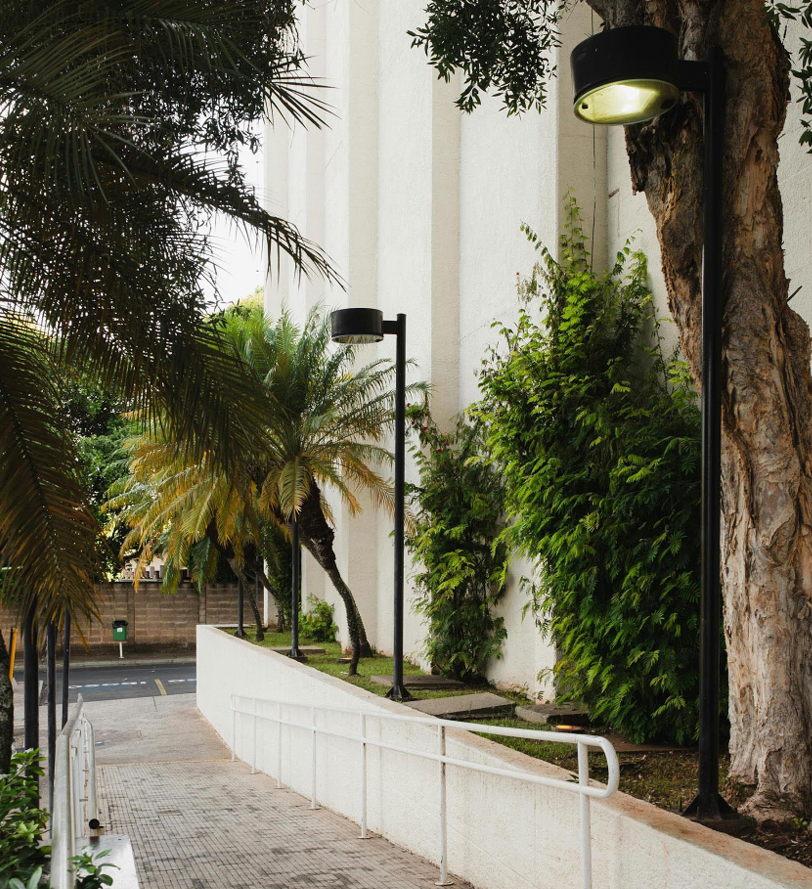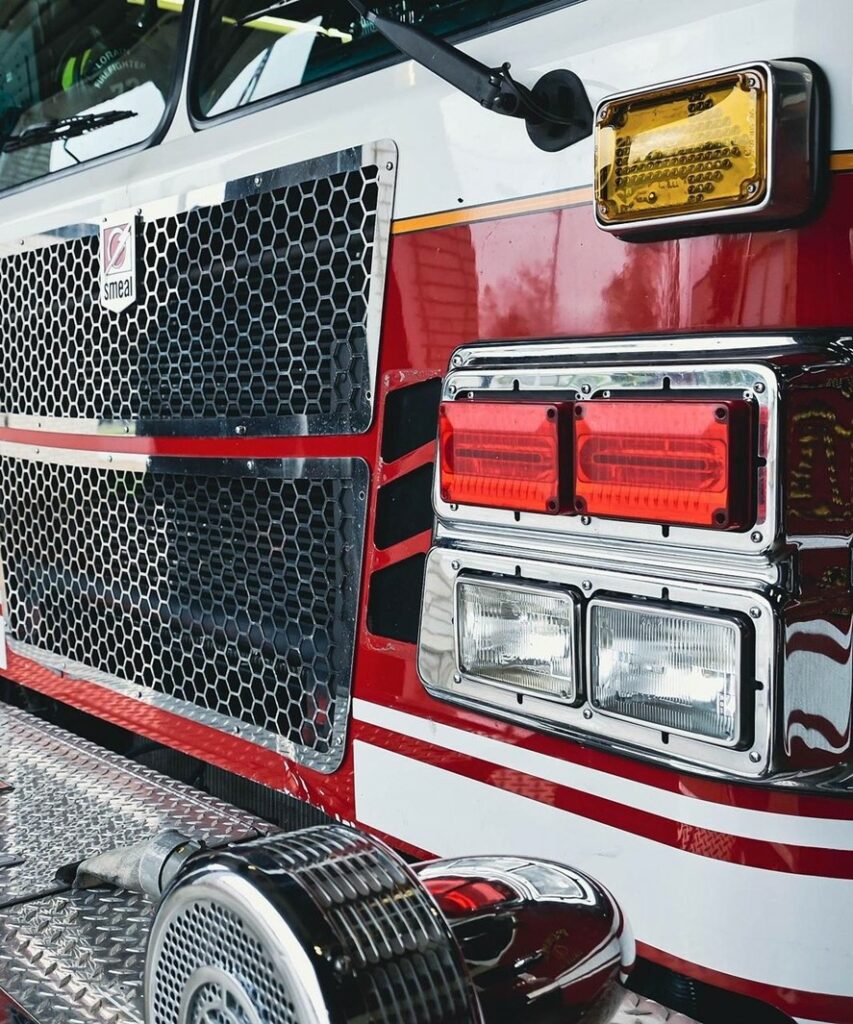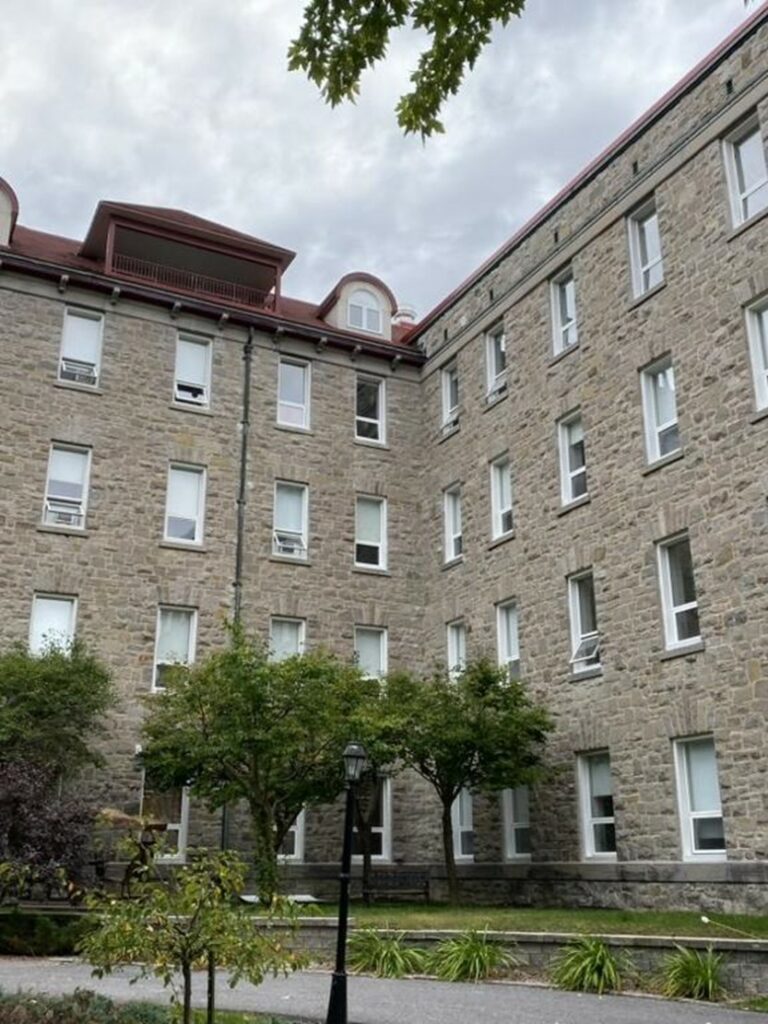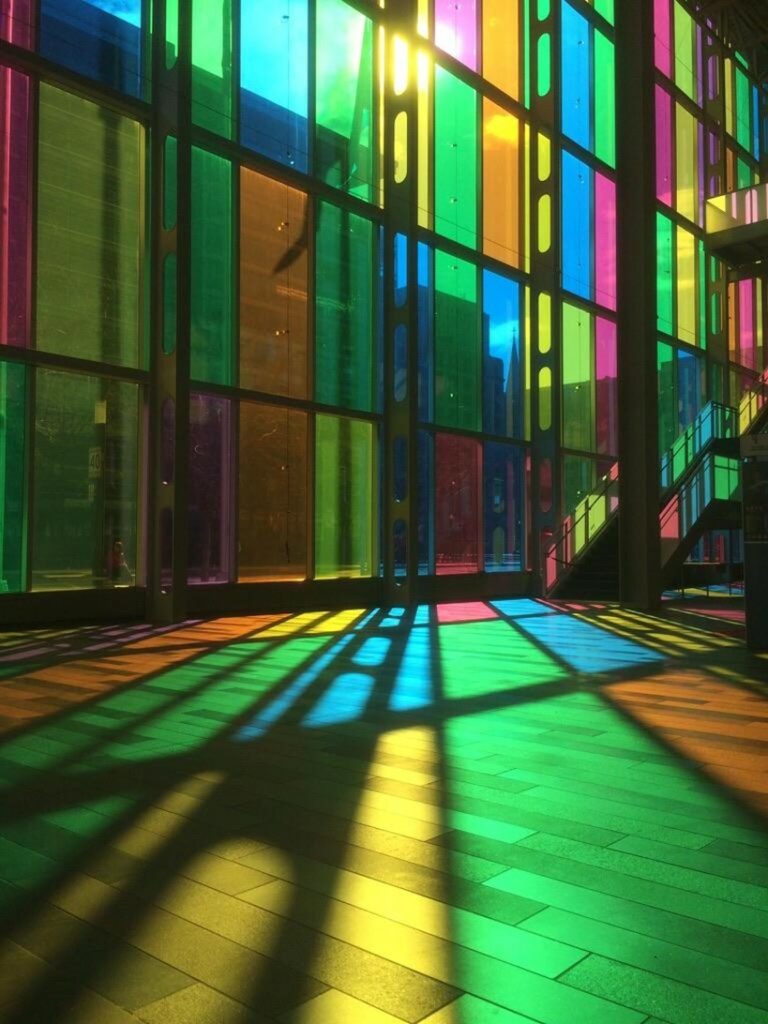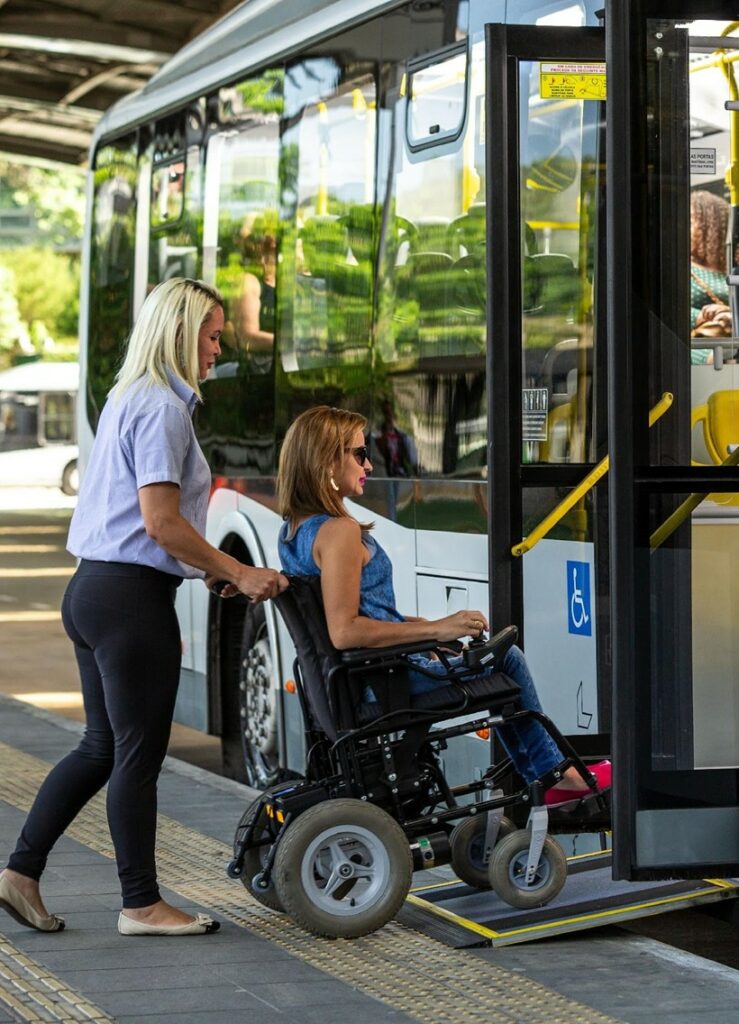
What is an accessible and inclusive dwelling?
A dwelling is a stable place of residence that can take several forms: single-family home, plex, multi-family building, condominium, apartment, bedroom, student residence, seniors’ residence, etc.
An accessible and inclusive dwelling is a space designed for anyone, regardless of their abilities, capacities or age, in which they can live, carry out their daily activities and assume their family and parental responsibilities. This type of housing eliminates barriers for persons with disabilities through accommodations that also benefit all other residents. When inclusive accommodations reach their limits, home care services, assistive devices and adaptations are provided to meet specific needs.
In addition to the general characteristics of an accessible and inclusive built environment, accessible and inclusive housing must be designed, built, renovated and maintained to ensure that:
- Passageways inside the building allow access to all common services and to each unit. In plex and multi-family buildings without an elevator, only ground floor units are accessible.
- Passageways in each housing unit give access to all rooms and functions. Two-storey dwellings should be avoided. Otherwise, a bedroom and full bathroom must be provided on the ground floor.
- Washrooms are big enough to move around in and are equipped for all users.
- The rooms are large enough to move around in once furnished.
- The kitchen offers circulation areas and equipment that can be used by everyone.
- All controls and equipment (height and opening of windows, temperature control, etc.) are accessible and can be used by everyone.
- Future adaptations to the specific needs of a person with disabilities can be carried out easily, with minimal work.
Overview of the situation
In Québec, there is a shortage of accessible and inclusive housing, while the demand for this type of housing is high. This puts a lot of pressure on home adaptation programs, which are often seen as the only way to make the necessary adjustments. The work can be years in the waiting, forcing many people to live in environments that do not meet their needs. Unlike other citizens, persons with disabilities often cannot freely choose their housing, move to another neighbourhood closer to work, or adapt to a change in the composition of their household.
By definition, accessible and inclusive housing can be occupied by everyone. However, due to its scarcity, this type of housing is often reserved for persons with disabilities, which can lead to a risk of ghettoization.
Making the majority of dwellings accessible and inclusive is essential to providing persons with disabilities with meaningful housing choices so that everyone can enjoy the benefits of such housing. Although Québec has made headway with the regulatory changes adopted in 2018, the resulting benefits for those affected have yet to be seen.
Finally, Québec is facing an unprecedented housing availability and affordability crisis. Measures to resolve this crisis must include universal accessibility to ensure that no one is neglected. Framing these efforts through a national policy on housing (which has been under development for more than a decade) and a government action plan on housing (announced several times as imminent in recent years) is also necessary to provide a structured solution.
Current accessible and inclusive housing supply
Québec does not have an exhaustive inventory of accessible housing, specifying the quantity, location or type. The diverse terminology (visitable, adapted, accessible, adaptable), varied characteristics, and multiple owners makes it difficult to count them. In addition, there is no specific marketing system to facilitate the search for accessible housing for persons with disabilities, nor to allow landlords to find tenants or buyers for these dwellings.
As with the built environment in general, the majority of homes in Québec date back several decades. In Montréal, for example, 71% of dwellings were built before 1980, with configurations often not suitable for universal accessibility (exterior stairs, spiral staircases, raised ground floor, etc.). Major renovation or home adaptation work is needed to make them accessible, with such work carried out only on a voluntary basis.
Since 1976, new residential buildings of three storeys or more, comprising at least eight units, must meet certain accessibility requirements in their common areas. Forty years later, in 2018, the first regulatory accessibility requirements for the interior of housing units were introduced. These requirements were based on studies showing that the additional costs for minimally accessible or adaptable design (accessible and inclusive) were minimal. After a period of adaptation for designers and developers, construction of the first non-voluntary accessible units began in 2020. That year, construction began on 38,000 multiple family units (apartments), accounting for less than 1% of Québec’s residential housing stock. While these units are a breakthrough, they are often minimally accessible, small and more expensive than existing units, thus limiting their affordability for many persons with disabilities.
By 2022, Québec had close to 136,000 social housing units. According to the Office des personnes handicapées du Québec, only 1% of these units were reserved for persons with disabilities. Under the AccèsLogis program (36,200 units built), the Société d’habitation du Québec had set high accessibility requirements: 10% of dwellings had to be adaptable in small residential buildings, and 100% (i.e., 30% in Montréal) in larger buildings. However, little data is available on the units actually completed and the majority of adaptable housing delivered under the program in Montréal were intended for seniors. The Québec Affordable Housing Program, which replaced AccèsLogis, now requires that 10% of units be adaptable regardless of the size of the building—which is a setback.
In Montréal, of the 20,810 low-rent housing units managed by the Office municipal d’habitation de Montréal, only 631 are adapted (3%), of which 104 (0.5%) are for families. Wait times for low-rent housing are increasing across Québec, with families requiring adaptable or accessible housing particularly affected. In 2021, the average wait in Montréal was 5.7 years.
Accessible and inclusive housing demand
There have been no specific analyses on the demand for accessible and inclusive housing. However, in 2017, in Québec, 1,053,350 people reported having a significant and persistent disability affecting their daily activities, representing 16.1% of the population. Of this group, more than 260,000 used special accommodations in their homes, and 15% (39,000 people) lived in poorly adapted housing. In addition, 70,000 people did not have specific accommodations, despite requiring them, bringing the number of people in need of accessible and inclusive housing in the short term to almost 110,000.
This demand is heightened by an aging population. The prevalence of functional limitations increases drastically with age, with a disability rate of 57.2% among Quebecers aged 65 and over, and 84% among those aged 85 and over. With 25% of the Québec population aged 65 and over by 2031, and 25% of the population aged 85 and over by 2061, future demand for accessible and inclusive housing is expected to grow exponentially. Many seniors already want this type of housing so they can remain independent for as long as possible. Family and friends of seniors and people with disabilities are also looking for accessible and inclusive housing due to an increased sensitivity to accessibility issues as well as the visitability, practicality and functionality of such housing.
Persons with disabilities do not always live alone. In 2017, for example, 21% lived in a household with at least one child under the age of 18 . In the absence of suitable housing for large households, their only option is often a bigger home unsuitable for functional limitations, which creates dependency and vulnerability. As a result, there is a demand for accessible and inclusive housing of different sizes to accommodate different life choices.
Persons with disabilities are also more often renters compared to those without disabilities. Almost half of those with mobility difficulties are renters, with the majority living below the low-income cut-off. However, only one in seven persons with disabilities lives in subsidized housing. This situation is becoming critical in times of housing shortages, with discrimination by some landlords, refusal to carry out adaptation work, and rising rents.
Lastly, 9.4% of persons with disabilities live in housing in need of major repairs, compared with 6.7% of people without disabilities.
Home adaptation
When a person’s needs change, when they can’t find a suitable home or when an accessible and inclusive home requires modifications, there is often only one solution—home adaptation. This sometimes leads to major renovation work. However, not everyone has the will or the means to embark on such a project, especially since living in unsuitable housing is already an everyday challenge.
A few home adaptation assistance programs exist, each aimed at specific clients with its own rules and criteria. Some are simpler and/or more generous than others, which creates inequalities between applicants in terms of waiting times, assistance and financial support. This includes programs for victims of workplace or road accidents, for veterans, or for people living in an Indigenous community.
The majority of persons with disabilities who do not meet the criteria of these specific programs must turn to the Société d’habitation du Québec’s Residential Adaptation Assistance Program (or its municipal equivalent for the Ville de Montréal) to get help with the work needed to meet their basic needs. In 2022, this program only achieved 1,101 home adaptations. Since its inception in 1990, the program has never been able to meet demand, experiencing prolonged wait times, high abandonment rates, partially met needs, and a clientele mainly made up of owner-occupiers, whereas persons with disabilities are primarily renters.
Low-rent housing units are not eligible for the Residential Adaptation Assistance Program. The necessary adaptations to these units must be financed from the building maintenance and repair budgets at a time when there is a chronic maintenance deficit in Québec’s low-rent housing stock.
Other considerations
Other factors influence the ability of a person with disabilities to leave home and interact with the community. They include:
- The cost of their housing based on their financial capacities.
- The availability, variety and accessibility of shops and services close to their residence.
- The availability and accessibility of means of transport: public transit, paratransit, pedestrian amenities, parking, etc.
- Sufficient home support services.
In addition, some people living independently require supervision or assistance in carrying out everyday activities. This support can take many forms, ranging from home support services to pooling hours of service for a continuous presence (24/7), or even parent-initiated projects for persons with intellectual disabilities or autism spectrum disorders. In all cases, flexibility and collaboration with the health and social services network are essential to avoid institutionalization.
Standards and obligations
In Québec, building requirements come under the responsibility of the Régie du bâtiment du Québec for large buildings (more than three storeys or more than eight units), and under municipal jurisdiction for small buildings (three storeys or fewer and eight units or fewer).
Since 1976, the common areas of large residential buildings must meet accessibility standards, while the first requirements for home interiors did not appear until 2018. For buildings of four storeys or fewer, the current regulations do not include any requirement for an elevator, reducing the number of accessible units, even with the new requirements in effect. Housing units located in seniors’ residences are not subject to these standards.
Some municipalities in Québec have adopted more stringent accessibility requirements than specified in the Québec Construction Code for new buildings in their territory. In Laval, in addition to making the main entrance accessible, 50% of other entrances must also be accessible, and 10% of units in buildings with 13 or more units must be adaptable. The city of Drummondville requires widened doors, and Victoriaville requires corridors and widened doors in all types of housing, including single-family homes.
In addition to the standards for large buildings, the Construction Code contains directives for small buildings. For example, if the height difference between the entrance to the apartment building and the ground floor is 600 mm or more, accessibility is not required, resulting in buildings with semi-basement dwellings or interior staircases in the entrance hall, making subsequent adaptations very difficult. Municipalities may also require increased universal accessibility in certain areas or for certain projects through their planning by-laws. Public consultations allow citizens to influence these by-laws to give greater consideration to universal accessibility.
In addition to by-laws, there are standards and voluntary programs encouraging homeowners and contractors to improve housing accessibility.
The Canada Mortgage and Housing Corporation (CMHC) has supported accessible housing for many years, promoting the development and renovation of social and community housing, as well as contributing to research and knowledge sharing related to housing. It also offers numerous information documents on housing accessibility.
The Société d’habitation du Québec (SHQ) manages many housing improvement programs. In addition to home adaptation, it establishes rules and budgets for the deployment and maintenance of low-rent housing stock, the management of AccèsLogis units and affordable housing (Québec Affordable Housing Program), and provides financial support to certain households to pay their rent. Although many SHQ programs include accessibility components, it is neither systematic nor cross-cutting. In February 2023, the government announced it was ending the AccèsLogis program without proposing a replacement to ensure housing accessibility.
The Canadian Standards Association developed the B652 standard on accessible housing, which provides dimensions and solutions to facilitate housing accessibility, but its application remains optional.
Available resources
Subsidies:
-
Residential Adaptation Assistance Program, Société d’habitation du Québec.
-
Montréal Home Adaptation Program, Ville de Montréal.
-
Adaptation de domicile [Home adaptation], Commission des normes, de l’équité, de la santé et de la sécurité au travail.
-
Home adaptation, Société de l’assurance automobile du Québec.
-
Québec Affordable Housing Program, Société d’habitation du Québec.
Documents:
-
Titre de liste
Experience 303: a reference site for information on construction and renovation as well as a window on the concept of universal design that places the individual at the very heart of the space, Société Logique.
-
C’est aussi ça le logement universellement accessible: promotion and mobilization campaign for accessible and inclusive housing, Société Logique, Ex aequo and many other partners.
-
Guide des bonnes pratiques pour le développement d’un projet d’habitation sociale et communautaire universellement accessible [Guide to best practices for developing a universally accessible social and community housing project], Ex aequo.
-
Accessibilité à l’intérieur des logements d’habitation [Accessibility inside housing units], Régie du bâtiment du Québec.
-
Reference documents on accessible housing, Canada Mortgage and Housing Corporation.
-
Accessible Housing Network: A collaboration of over 70 Canadian organizations advocating for accessible and inclusive housing.
-
Guidelines on accessible and inclusive housing for people with cognitive disabilities, Centre for Excellence in Universal Design
Fact sheet prepared in collaboration with Société Logique.
Related fact sheets in this guide
To ensure accessibility and inclusion of housing, also consult the following fact sheets:





